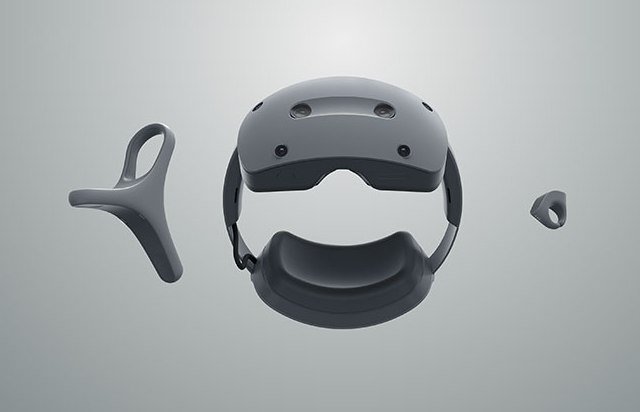Sony Corporation entered the mixed reality headset business, unveiling a device tailored for spatial content creators.
 Anticipated to hit the market later this year, Sony’s mixed reality headset is set to go head-to-head with Apple’s flagship spatial computing headset, the Vision Pro, slated for release in early February, according to insights from GlobalData’s Technology Foresights.
Anticipated to hit the market later this year, Sony’s mixed reality headset is set to go head-to-head with Apple’s flagship spatial computing headset, the Vision Pro, slated for release in early February, according to insights from GlobalData’s Technology Foresights.
While Sony has previously focused on VR headsets for gaming applications, the latest release showcases several innovations that directly compete with Apple, signaling a shift into broader metaverse technology.
GlobalData conducted a peer comparison using its Technology Foresights model, revealing key areas of competition and innovation focus between the two tech giants.
The landscape of spatial computing and metaverse technology has seen a slowdown in innovation trends, with major players such as Meta Platforms, Sony, and Microsoft leading advancements. Apple, despite initial perceptions of a late entry, has demonstrated consistent commitment and acceleration in innovation within the domain, as highlighted by the Technology Foresights model.
“The rivalry between Sony and Apple in crucial metaverse technologies, such as foveated rendering, 3D virtual walkthroughs, and real-time rendering, is quite revealing. Sony, leveraging its gaming tech background, has been pioneering these innovations, but Apple has rapidly caught up and emerged as a leader in a comparatively short period,” Sourabh Nyalkalkar, Practice Head of Innovation Products at GlobalData, said.
The Technology Foresights model’s peer comparison module offers a detailed exploration of specific innovation areas, plotting Apple and Sony’s key metaverse innovations on proprietary metrics, such as innovation impact and focus.
 Both Sony and Apple are expanding beyond gaming applications, with innovations like AR-assisted measurements and bio-responsive VR, indicating broader industrial applications. Sony’s innovation landscape also suggests a focus on spatial headsets for healthcare, with activity in AR-guided medical interventions and medical imaging innovations within the metaverse innovation landscape.
Both Sony and Apple are expanding beyond gaming applications, with innovations like AR-assisted measurements and bio-responsive VR, indicating broader industrial applications. Sony’s innovation landscape also suggests a focus on spatial headsets for healthcare, with activity in AR-guided medical interventions and medical imaging innovations within the metaverse innovation landscape.
Sony’s mixed reality headset features Snapdragon XR2+ Gen 2 Platform, the latest XR processor by Qualcomm Technologies. The processor unlocks the power of the 4K OLED Microdisplays to deliver stunning image quality, as well as provides user and space tracking for seamless XR experiences.
GlobalData earlier said Meta’s Quest 3 has taken a significant lead over Apple’s Vision Pro, primarily due to its absence of tethering.
Unlike its competitors, the Quest 3 eliminates the need for a battery pack or a connection to a power source, offering users a seamless and wireless virtual reality (VR) experience. Notably smaller than Meta’s Quest 2, the Quest 3 introduces a premium attribute, mixed reality (XR), at an affordable price point.
The Quest 3’s superiority is further amplified by Qualcomm’s latest Snapdragon XR2 Gen 2, making it more powerful and twice as fast as the premium Quest Pro. This technological leap enhances user-friendliness and positions the Quest 3 as a top contender in the VR headset market. GlobalData forecasts revenues from VR headsets to surpass $58 billion by 2030, underlining the potential for innovation in this burgeoning market.
While Meta has been able to maintain affordability through subsidies on its headsets, industry experts caution that this strategy may not be sustainable in the long run. Gaming remains a key use case for extended reality (XR) headsets, and the inclusion of Xbox Cloud gaming is expected to enhance the Quest 3’s appeal to gamers. However, the inherent limitations of headsets in achieving mainstream adoption are acknowledged, and Meta’s market dominance is on the brink of a challenge with the imminent release of Apple’s Vision Pro.
Despite not being a direct competitor, the Quest 3 and Apple’s Vision Pro are now under intense scrutiny. The Vision Pro, positioned as an augmented reality (AR) headset, comes with a premium price tag seven times higher than the Quest 3, placing it in the uber-premium category.
GlobalData did not say whether Sony’s mixed reality headset is better than Meta’s Quest 3 or not.
